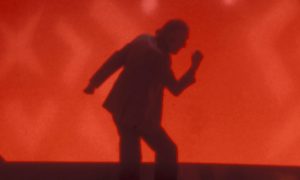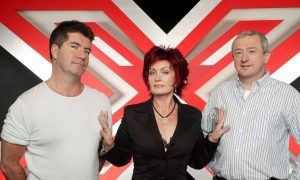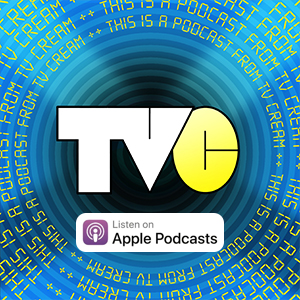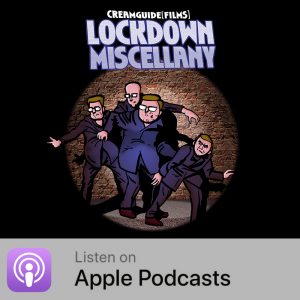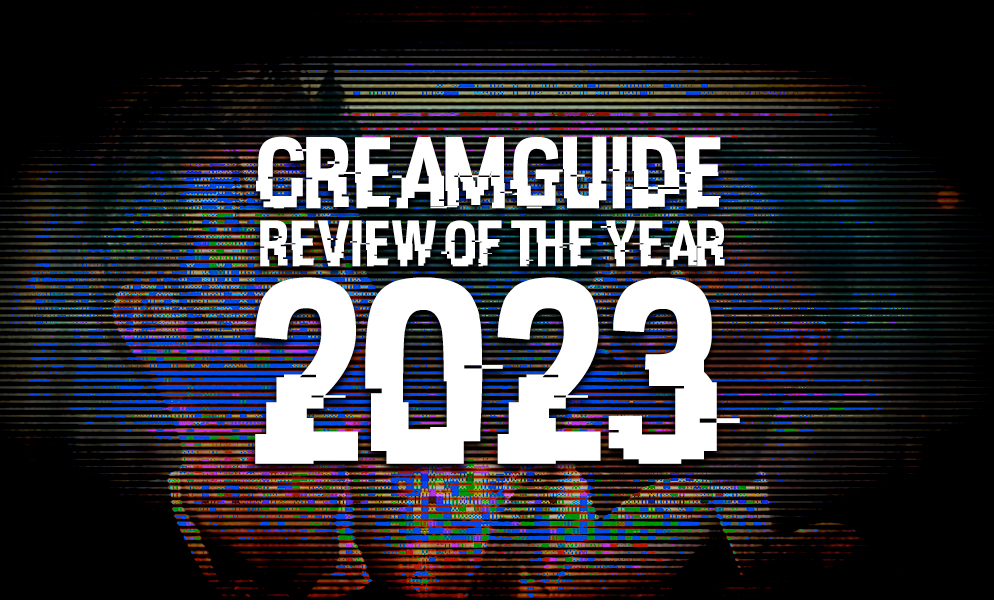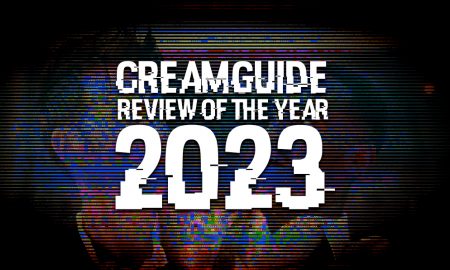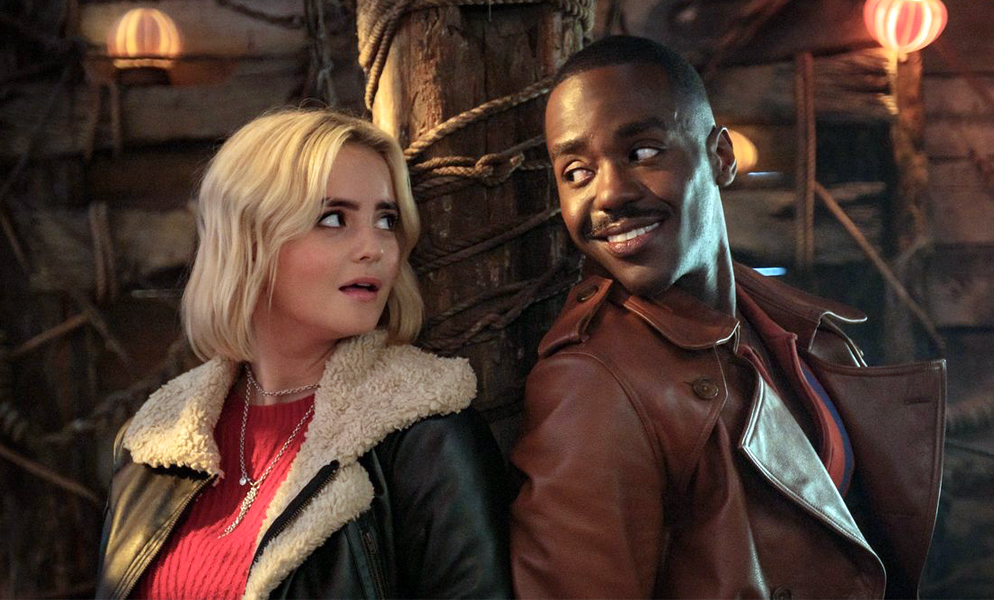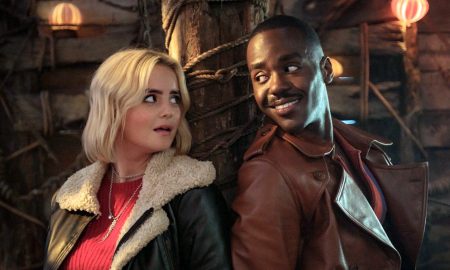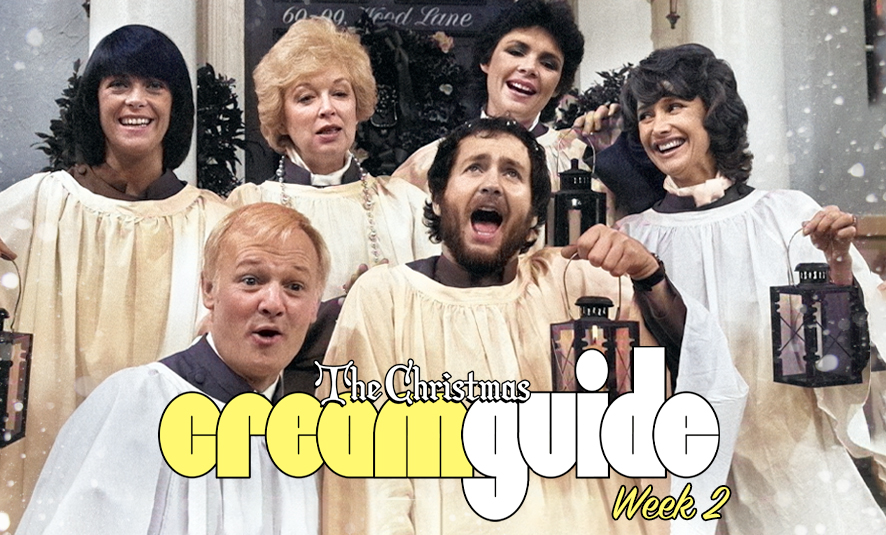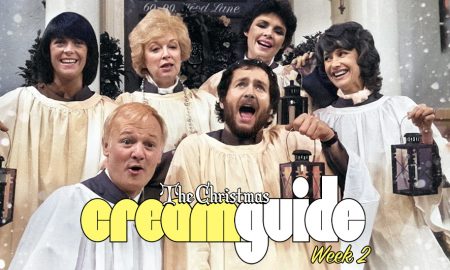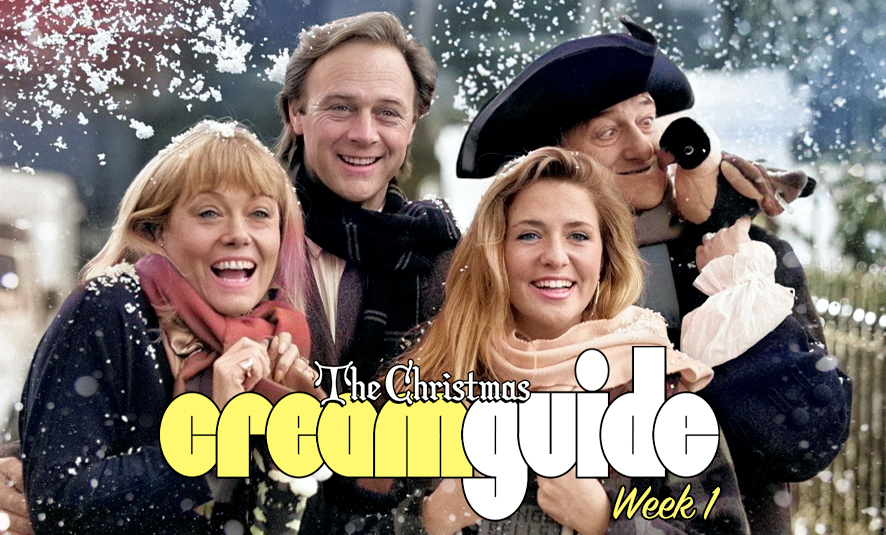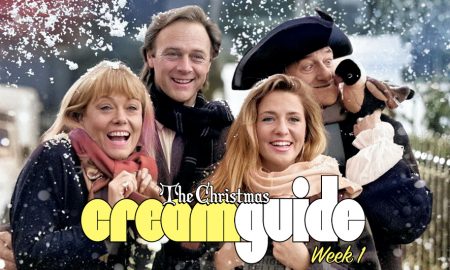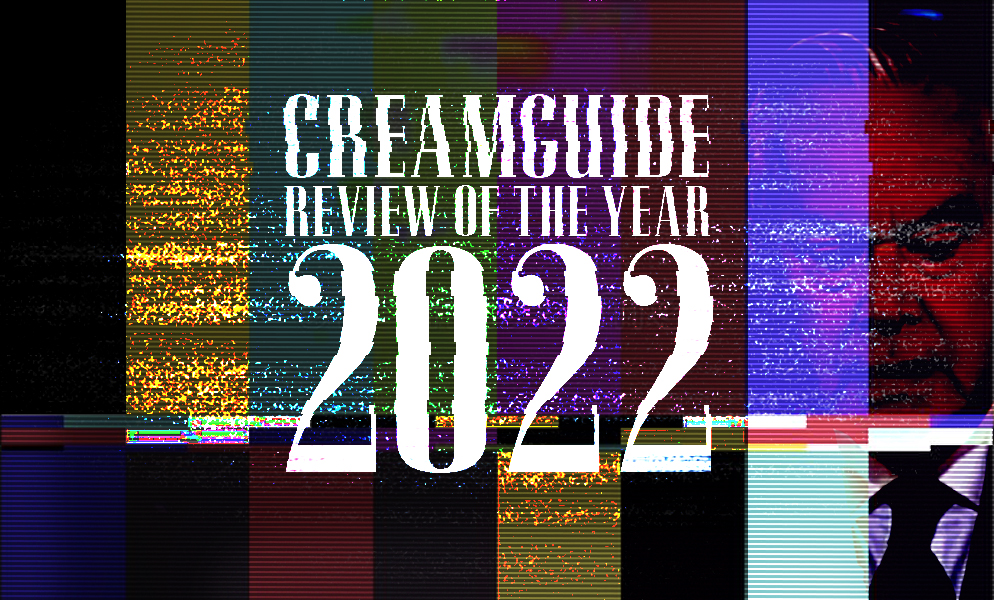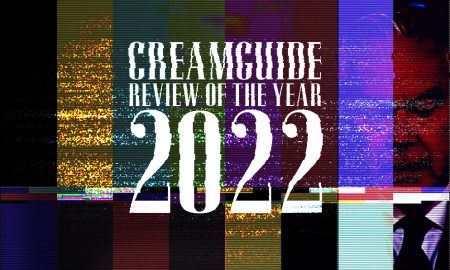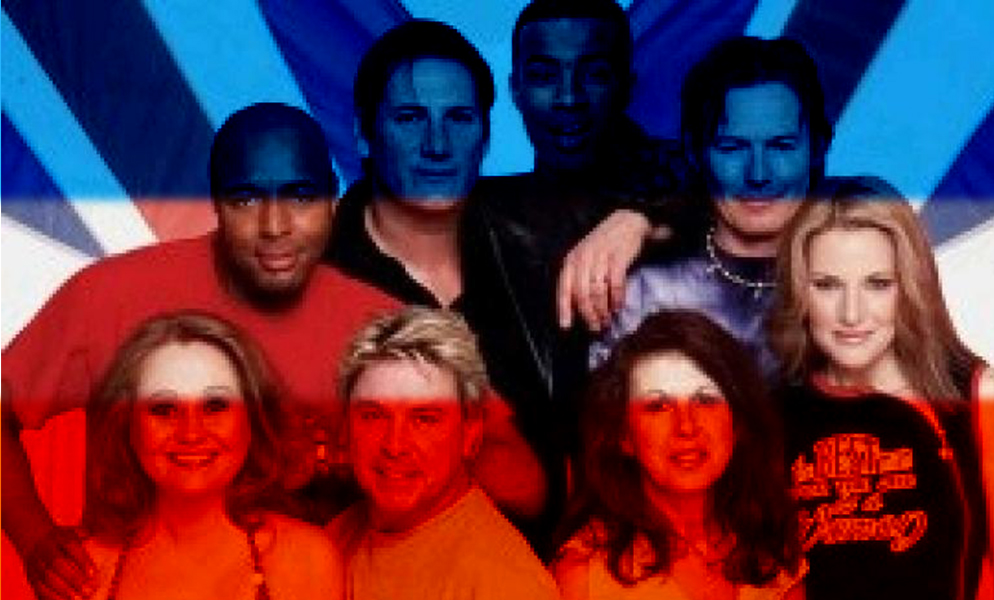
In the early 2000s Frank Skinner joked that, if they could get rid of Ant and Dec, David Baddiel and himself would be the only presenters left on ITV – summing up the rather transitional phase that light entertainment was in at that moment. But there was still Davina McCall, who was finding herself caught up in a range of rather forgettable formats. In May 2002 she launched a new game show, The Vault, which seemed like an attempt to find a successor to the fading Millionaire, despite the last such venture, Robert Kilroy-Silk’s Shafted, being dropped after just three weeks back in 2001. The Vault was based on an Israeli format and offered a top prize of £100,000 – which if it wasn’t won in the studio would be offered up to a lucky viewer waiting at the end of the phone, and then – if still not claimed – rolled over to create an even bigger prize pot for the next edition.
The Vault employed a format that was ludicrously unwieldy. Eight contestants would be asked to predict that week’s combination to the titular Vault as chosen by the programme’s producer. The four who got the nearest would play for the big prize, while the other four would become the “brokers” and get the chance to earn money by ‘selling’ answers to the contestants when they were stuck. There were also additional ‘brokers’ on the phone, also hoping to offer answers in exchange for a cut of the prize. With rounds being played against the clock, this led to frantic negotiations, and it wasn’t unusual for over-excited brokers to give away the answers without asking for payment and flustered contestants to offer more money in the ‘deals’ than they actually had to play with.
The Vault also specialised in a rather erudite set of questions, which seemed out of place on Saturday night ITV, and was particularly fond of asking about the identities of heads of state and cabinet ministers. The rules meant no passing was allowed, so often these questions would be met with blank faces around the studio and hence acres of dead air. This added to the lack of atmosphere, as did the never-seen studio ‘audience’. Meanwhile offering huge prizes to anonymous people on the phone meant that big money wins often felt rather anti-climactic. Despite these flaws, The Vault was recommissioned for a second series in 2003.
Saturday nights was a problem television for ITV. Their few successes were talent dependent and often by their very nature could only run for a limited time as they required a great deal of setting up. Where were the quizzes that could be recorded in batches and make for undemanding light entertainment, and fill the gaps between the next big event? So desperate were ITV to find long runners that even Moment of Truth was dragged back into service, despite huge audience apathy when Dame Cilla was in charge. Now renamed Celebrities Under Pressure, and fronted by Melanie Sykes, the format still didn’t add up to much, and still wasn’t very successful, but as long as it got a couple of million viewers and filled a hole, ITV seemed happy enough.
Other channels were in a similar hole. The BBC’s big hope in the autumn of 2002 was The Chair, which though an American format, seemed to owe quite a bit to The Weakest Link, Dog Eat Dog and other ‘nasty’ quizzes. Cruelty was a theme that was in the ascendancy at the time, and in the USA The Chair had gone up against a similar series, The Chamber, where contestants had to put up with all sorts of unpleasantness – relentless heat, relentless cold, being spun around and so forth – while trying to answer general knowledge posers.
The Chair was not quite as unpleasant, but still had an ‘intense’ factor, as contestants were wired up to a heart monitor and forced to ensure their heartrate remained below a certain level before they were able to actually answer questions. Therefore, it was important not to get flustered and remain calm if you wanted to win anything. The BBC purchased the format lock, stock and barrel from the USA, including the original American host – tennis legend John McEnroe. He was already a familiar face on the BBC, of course, thanks to his engaging and outspoken commentary on Wimbledon.
At the start of the run, much of the enjoyment came from Mac taking on the role of light entertainer, and watching him banter with contestants over what they did and where they came from made for eye-opening and amusing viewing; you certainly couldn’t imagine many other sports stars managing to pull it off. However the concept was less inspired. While trying to keep your heart rate down during Mac’s probing may have seemed like the ideal way to create tense viewing, the actual result was rather less thrilling, as it regularly led to simply watching people sitting around trying to keep calm, failing, and not being able to do anything else. Mac tried his best, but it was a concept that probably looked good on paper but failed to translate to television. It was little surprise, then, when the UK version of The Chair followed the American predecessor by only lasting one series.
Other new ideas just seemed ill-conceived from day one. In March 2003, ITV launched Reborn In The USA – a name in search of a series. The show came from the same production team as Popstars – The Rivals, and the hope was that it would become just as much a national talking point. The difference was that, instead of finding new talent from scratch, Reborn would be attempting to relaunch old musical acts – Gina G, Dollar and Sonia, for example. This wasn’t such a bad idea, perhaps, but the production team seemed to lose all sense of sanity in the execution.
The has-beens were sent on a coach trip around the USA – hence the name – in the hope they could all argue amongst themselves and provide some exciting viewing. Instead, it meant little except that the live shows – fronted, as seemed to be the case for everything on ITV, by Davina McCall – were transmitted in appalling quality NTSC and added a real distance between the viewer and the participants. Even more bafflingly, they didn’t perform any of their own songs, but were instead asked to perform tracks ‘associated’ with the city they were in, thus robbing proceedings of any sense of nostalgia and turning it into a bland and unexciting singing competition. The scale of the series meant it was committed to making it to the end of the run, but by then it had shifted from its peak 9pm slot to a less prestigious teatime placing.
So where were the audience going if the BBC and ITV were floundering? Well, in early 2003 they clearly weren’t going to Channel Four. Since Don’t Forget Your Toothbrush ended in 1995, Chris Evans had moved away from Saturday night television, and instead watched as numerous light entertainment programmes had attempted to imitate various aspects of its format. In 2000, when TFI Friday was axed, Evans withdrew from television altogether, and after leaving Virgin Radio in 2001 spent the next 18 months in America with his new wife Billie Piper doing next to nothing and living off the huge amount of cash he’d accumulated. However he eventually decided he wanted to get back into television, this time behind the scenes.
Evans’ old production company, Ginger Television, was actually still going but, in a move perhaps symptomatic of television production in the modern era, he didn’t actually have anything to do with it, the company now a subsidiary of Scottish Television who had acquired it when they took over the Ginger Media Group to get hold of Virgin Radio. Indeed, Ginger had most recently produced Ant and Dec’s remake of Whatever Happened To The Likely Lads?. Evans therefore started afresh by forming his own company, UMTV, and such was Evans’ reputation – now far enough away from the final desperate months of TFI – that they had no trouble in getting commissions. However, their first programme, Channel Five’s teatime miscellany Live With … went through two presenters in Chris Moyles and Christian O’Connell, but failed to make any impact and was soon canned.
Nevertheless, news that UMTV were interested in making Saturday night television got people very excited, and Channel Four commissioned Boys and Girls, a new format that, it was hoped, would do for the new decade what Toothbrush had done for the last. It was even transmitted in exactly the same slot – 9pm on Saturday nights from March 2003. The same mix of in-studio games, daft stunts and pop stars was promised, and though Evans wouldn’t be presenting the show he was going to be writing the script. The front man was instead Vernon Kay, personally selected by Evans and said to be a star of the future after impressing as linkman on Channel Four’s teen strand T4. The hope was that he would attract a younger audience who still weren’t watching TV on a Saturday night. Everyone seemed very excited, C4 spending truckloads of money on promotion, while the production team were telling everyone who listened that they’d never seen anyone with so many ideas and so much energy as Evans. It was also reported that the format had already been purchased by ABC in America before an episode had even been screened.
However it became apparent that, rather than taking its cue from the successful Toothbrush, the Evans show it most resembled was Red Alert. Again the studio audience played a central role in proceedings, split into the two eponymous sexes and all taking part in the games, meaning it was impossible to get to know anyone or root for a favourite. Through a succession of noisy and witless games – including the notorious “Babe or Minger” and a particularly unimpressive interlude when a contestant’s parents walked on naked – the contestants were whittled down to one who would then get to choose a member of the opposite sex to take with them on an adventure; and they were whisked away on a golf buggy driven on stage by one C. Evans. Over the course of the week their progress was shown to us on a companion programme on Friday nights – they would live together (oo-er) and get challenged to buy various consumer durables, and the following week would have to justify their purchases in order to keep them.
One of the major flaws with the execution of Boys and Girls was that the contestants were so poorly cast that nobody cared whether they won, and in fact most were probably willing them on to lose. Yet nothing on the programme seemed exciting or interesting, with Evans’ long break abroad suggesting he had completely lost touch with what had happened on TV while he was away. The naked parents were fortunately dropped after just one show, though were replaced by the old Evans “throw stuff out of your front doors” concept that had been amusing on Toothbrush, but didn’t work on Red Alert or this. Kay was rather at sea as host, regularly fluffing his lines and being unsure of what he was supposed to be doing.
The first episode, with an audience of 1.1 million, was beaten by all four terrestrial channels, and was way down on Channel Four’s normal Saturday night audience. It was no surprise, then, that within a few weeks C4 were shifting it to 10.30pm – the official line from C4 being that “it is not at all a demotion. It’s a proactive move to help it get the audience it deserves … we are looking for the 16-34 age group audience and moving it later. Let’s have a look and see if there is more of those at that time.” The idea is it would better cater to its intended audience if it were in a ‘post-pub’ timeslot; although exactly how many young people leave the pub by half past 10 was perhaps a moot point.
Meanwhile the newspapers were gleeful when it was announced that producer Rob Clark had quit the production after just three programmes, only to be convinced to stay by Evans himself. The ABC deal also appeared to be off, perhaps after the Americans had actually seen it. For a programme that was apparently costing £500,000 an episode, this was a major problem. The writing was already on the wall when C4’s Head of Entertainment Danielle Lux claimed that Saturdays were no longer a priority for her, and that “my department’s focus is on comedy and entertainment on Friday night” but, never fear, “That doesn’t mean Boys and Girls isn’t coming back.”
However it was no surprise when the final episode of the series – screened at 11 o’clock at night – turned out to be the last instalment ever. Chief Executive Mark Thompson said that, “People who liked Boys and Girls really liked it. Maybe the programme was in some ways too narrowly focused on a certain audience in age terms to be a really big success for us. It will not be back.” Later in 2003, Tim Gardam, the departing Director of Programmes, said that although it “didn’t work,” it was partly his fault for not being “tough” enough with Evans – “Chris Evans gave us The Big Breakfast, Don’t Forget Your Toothbrush and TFI Friday and it would have looked ungracious not to commission it”. In 2005, Head of Marketing Polly Cochrane seemed to confirm the indulgence, announcing that, despite the million pound advertising campaign, “we hadn’t seen it. We were told it was going to be important and it had Chris Evans in it”.
Boys and Girls’ failure turned Channel Four off the idea of Saturday night entertainment altogether. Mark Thompson suggested that, “We should look at interesting, upmarket, thought-provoking alternatives. There may be some US entertainment in there but it should be aimed at people who look at Saturday night TV and think there’s not enough on.”
And that seemed to be almost everyone …
Next Monday: Getting grief from the papers


